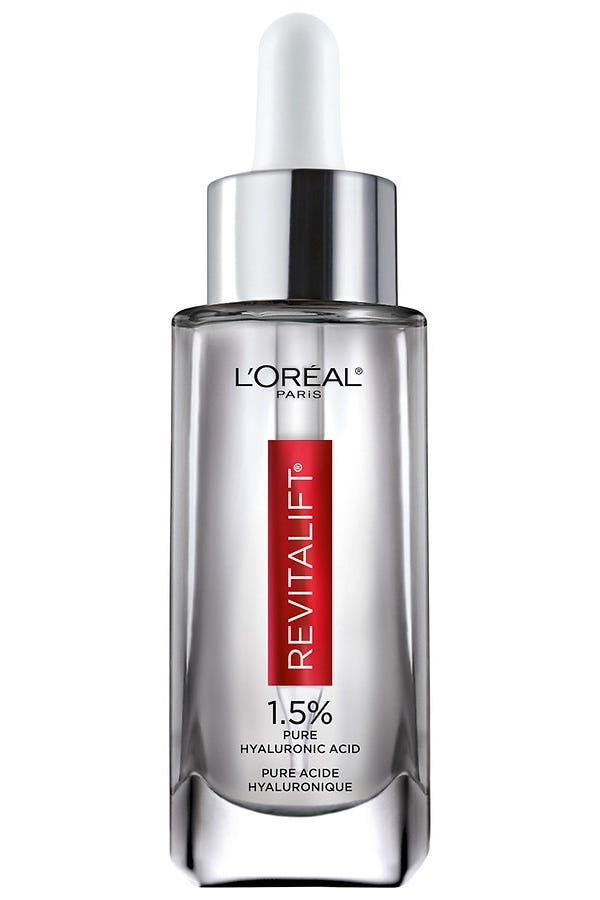- Welcome to the first installment of our new column, Ask Our Beauty Director, in which our beauty director Brian Underwood breaks down the latest beauty trends—and whether they’re worth your time and money.
- First up, a look at the latest TikTok craze, skin flooding, in which one layers specific hydration products for a supremely quenched complexion.
- Experts sound off on the trend, offering advice on how to do it without irritating your skin.
Thanks to TikTok, we’ve slugged our skin, we’ve cycled it, we’ve tried to make it look like a glazed donut, we’ve even peered at a pane of glass and thought, “That’s the look I’m going for.” And just as our product-pickled outer layers cry out, “What could possibly be next,” we have the answer: Skin flooding.
This latest craze is—as one would imagine—all about flooding your complexion with moisture. It seems like a great idea for this time of year, when ambient humidity is low and forced warm air could be sapping our natural hydration. But know this: There is a routine. There are rules. The way you skin flood is almost as important as what you use.
Meet our experts: Victoria Fu and Gloria Lu, co-founders of Chemist Confessions and cosmetic chemists in residence for Revela, Karan Lal, DO, director of pediatric dermatology and cosmetic surgery at Affiliated Dermatology in Scottsdale, Arizona, Joshua Zeichner, MD, associate professor of dermatology and director of cosmetic & clinical research in dermatology at Mount Sinai Hospital in New York
So, is it a good idea? As a beauty editor, that’s the question I get most often about these social media trends. I’m here to help—and I went to the best of the best experts to answer all your flooding-related queries. Here’s what they had to say.
What exactly is skin flooding?
The moniker refers to a specific four-step layering routine meant to infuse parched skin with a boost of moisture. This routine commonly revolves around a superstar ingredient you may have heard about—hyaluronic acid. HA is a humectant and, as such, can draw moisture from the deeper layers of the skin and the surrounding environment to the top layers, where that hydration is needed most. “Water exists in your complexion in a gradient,” explains cosmetic chemist Victoria Fu, co-founder Chemist Confessions and one of the cosmetic chemists in residence for the skincare line Revela. “The deeper the layer of skin, the more water there is. Hyaluronic acid basically keeps the H2O moving to get it at a decent level in those uppermost layers.”
As mentioned above, the products used in a skin flooding routine are applied in a very specific order to enhance penetration. In this case, it involves smearing on each while your skin is still damp from the previous step. Why? “Wet skin tends to be more permeable, so ingredients can penetrate more easily, and products can spread better,” says Karan Lal, DO, director of pediatric dermatology and cosmetic surgery at Affiliated Dermatology in Scottsdale, Arizona. Also, when moisture is already present on skin, hyaluronic is better able to grab on and keep it there.
How do you skin flood?
TikTok skinfluencers are clear: To properly flood, you must follow these steps to the letter. They are:
- Wash with a gentle cleanser. In terms of product and ingredient penetration, starting with clean slate is crucial. When skin flooding, it’s recommended that you use a gentle cleanser (read: nothing with too many active ingredients like alpha hydroxy or beta hydroxy acids, vitamin C, or retinol). The truth is, that’s solid skincare advice, no matter what. “So much of this trend is really what we’ve been recommending as dermatologists for quite some time,” says Dr. Lal.
- Mist on hydration. Next up: Applying your first layer of moisture. That can come in the form of a hydrating toner, essence, or mist—anything lightweight and non-occlusive (a fancy way of saying something that won’t create a barrier on the surface of your epidermis; you want your skin to be able to absorb the subsequent steps). “The outermost layer of your skin is made up of fats that don’t easily allow water to penetrate,” explains Fu. “That’s why you start with these water-based steps.”
- Use a hyaluronic acid serum. While your face is still damp to the touch, smear on a layer of a water-based humectant serum. A hyaluronic acid-based option is the most frequently mentioned on TikTok, but don’t forget about other humectants, like glycerin, says Gloria Lu, the other half of Chemist Confessions and also a chemist in residence for Revela. “Hyaluronic acid has grabbed a lot of the spotlight right now, but glycerin has been shown to make skin even more pliant because it’s a smaller molecule size,” Lu adds.
- Seal it all in with an emollient moisturizer. To keep that moisture in your skin, the final step is to apply a moisturizer that will act as a seal and prevent trans epidermal water loss (TEWL). Occlusive ingredients like silicones, oils, and petrolatum can accomplish this. “Hyaluronic acid is great at attracting hydration, it’s not quite as good at keeping it there,” says Joshua Zeichner, MD, associate professor of dermatology and director of cosmetic & clinical research in dermatology at Mount Sinai Hospital in New York. “That’s why it’s so important to layer a traditional moisturizer on top.”
What are the benefits of skin flooding?
It’s all about moisture, moisture, moisture. And while that may not seem as tangible or exciting a benefit as, say, banishing a breakout or minimizing the appearance of fine lines or dark spots, there are immediate and long-term benefits of an adequately hydrated complexion. Just using a simple moisturizer alone—nothing fancy, TBH—has been shown to make wrinkles less visible. So moisturized skin = younger-looking skin. Not bad.
Also, let’s not forget that our skin’s primary function is to keep bad stuff out. When you moisturize, you’re reinforcing skin’s outermost protective layer, commonly referred to as the skin “barrier,” making it far less likely that allergen, irritants, and other unsavory characters can penetrate and cause a ruckus.
Who is skin flooding best for?
While the routine is suitable for all skin types, says Dr. Zeichner, it can be particularly helpful for people with—wait for it—extremely dry skin. And while Dr. Lal is quick to note that hyaluronic acid itself is a noncomedogenic ingredient (read: it won’t clog pores), those with oily or acne-prone skin should take particular care in choosing the moisturizer used in the last step. “If you’re using something with a lot of oils in it, you could exacerbate breakouts,” he says. That’s why both Drs. Lal and Zeichner recommend that oily types look for a moisturizer clearly labeled as “oil-free.”
Are there any risks to skin flooding?
As TikTok trends go, this one’s “pretty vanilla,” says Fu. The risk of seriously messing up your skin is low, but remember, the more products you pile on, the greater risk the of irritation. In fact, personal care product use has contributed to a significant increase in both allergic and irritant contact dermatitis, according to a decade-long retrospective study published in the Journal of the American Academy of Dermatology.
And while the typical skin flooding routine may not seem like overkill, once you do the math, you’ll quickly realize that you could end up applying up to 100 different ingredients to your skin in those four steps. There’s no telling which of those could cause a reaction, which is why most experts generally recommend the most streamlined regimen possible.
Brian’s bottom line
So…to skin flood or not to skin flood. Here’s the thing: If your skincare routine is something akin to mindfulness meditation, a small thing that brings you great joy, then go ahead. Flood away. But if you’re expecting this rigid regimen to yield miraculous complexion results, you may be disappointed. No, it likely won’t do anything bad to your skin, but there’s no science to support the idea that three separate moisture steps will produce better results than one great moisturizer. “There are a lot of creams out there that contain hyaluronic acid or sodium hyaluronate,” says Dr. Lal, “so you don’t need to skin flood if you have one product with all of the necessary components, which most now do.”
Will Dr. Lal’s advice save your skin? Who knows. Will it save you some money? Absolutely.

Brian Underwood is the beauty director at Women’s Health. He is an award-winning journalist with more than 15 years of experience covering beauty and lifestyle for several national media outlets and previously served as beauty and wellness director at Oprah Daily. His work has appeared in Woman’s Day, Life & Style Weekly, Good Housekeeping, and many more. He also serves as a member of the Skin Cancer Foundation’s gala committee and lives in New York City with his daughter.











